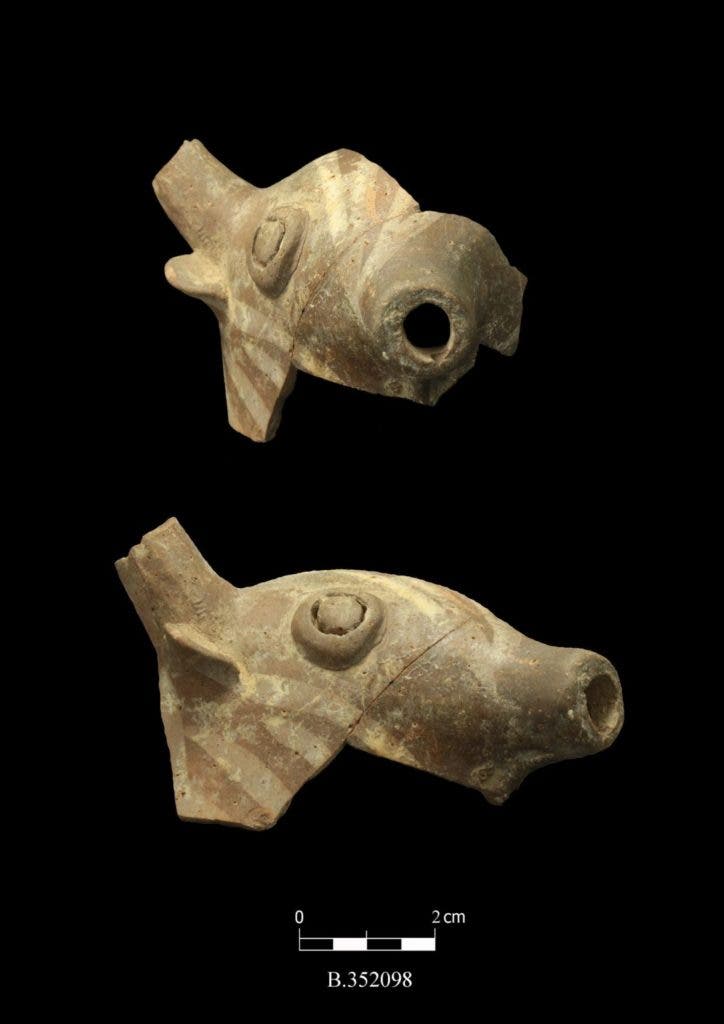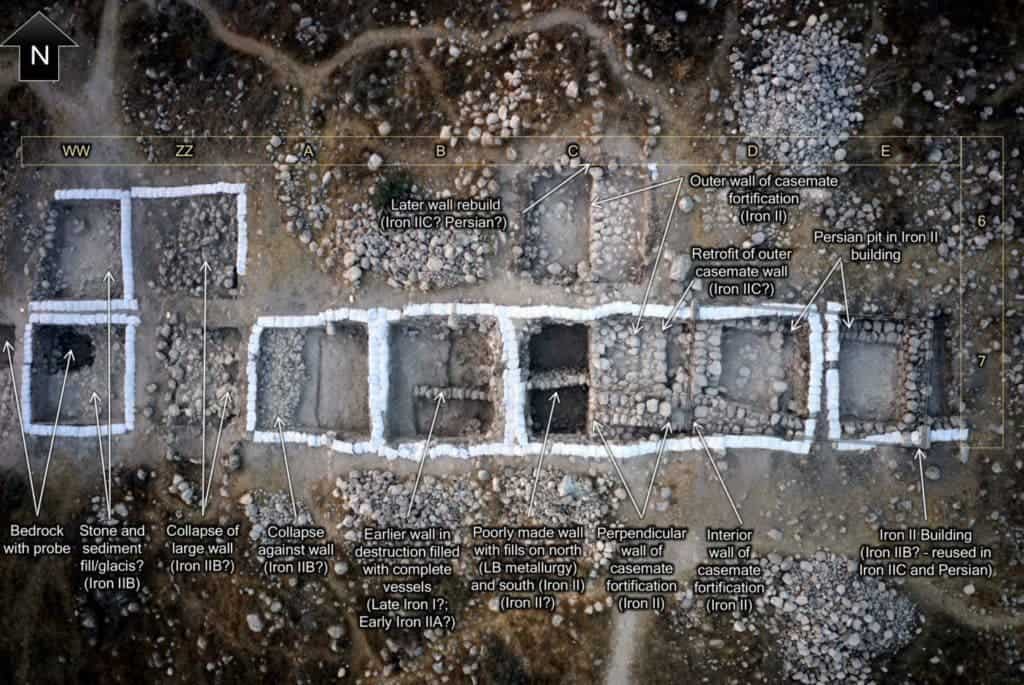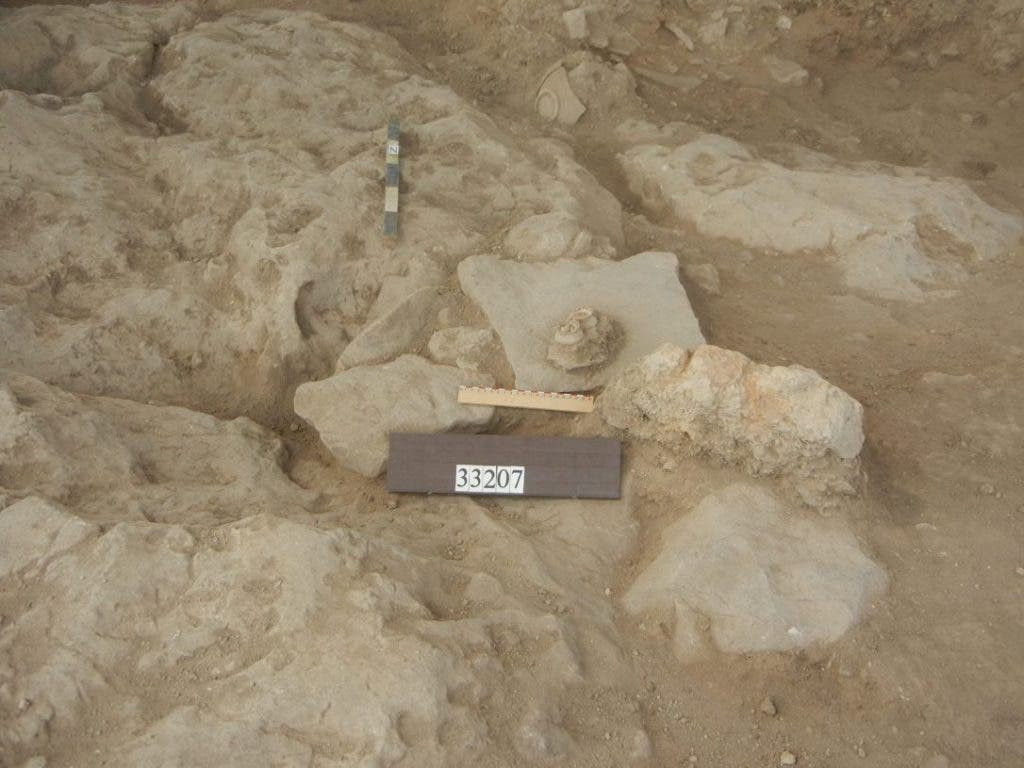Archaeologists have found rare masks and cultic tableware among other artifacts.

Israel may be the home of Judaism, but back in the day, people worshipped completely different things. Some 3,200 years ago at Libnah, a Canaanite city that would become Judahite in the biblical era, people were conducting pagan rituals. Archaeologists working in Tel Burna aren’t sure if they’ve found a temple or just a house rich in ritualic objects, but one thing’s for sure: pagan Canaanite rituals took place there.
Not long after the excavation began in 2009, Dr. Itzhaq Shai of Ariel University reported finding a courtyard inside a sturdy, large building, 15.8 meters long (52 feet). This was pretty interesting in and of itself, but as the work continued, researchers found more and more indicators of pagan activity, including cultic goblets and chalices, zoomorphic vessels, two ceramic masks, and a massebah (a pillar made of stone, associated with worship or memorial activity).
The belief that rituals took place there was strengthened by two discoveries: first, three rare, small vessels of Cypriot origin. Residue analysis revealed that the vessels contained a different kind of oil. Secondly, two gigantic pithoi (large storage container, somewhat similar to amphorae) imported from Cyprus, each with a capacity of 200 liters were found alongside charred bones of young sheep, goats, and pigs.
“Since the pithoi were discovered in the same context as the cultic vessels, we assume these were also part of this activity,” Shai concludes.
Flourishing and pagan

All these seem to show quite clearly that rituals — complex rituals, for that matter — seemed to take place there. But it’s more than just that. The weight of the pithoi, even empty, was considerable. Add in 200 liters of oil, consider that Libnah was an inland city, not a port, and you realize that someone went through a lot of trouble to get them from Cyprus to Canaan.
Libnah was a significant city, with several thousand inhabitants, many of which made their living selling oil and wine (archaeologists believe this based on a number of presses and agricultural installations they’ve found). During the late Iron Age, the city fell under Judahite control, and expanded even more. Archaeological evidence (as well as Biblical verses) of this Judahite period abound, and for once, the two seem to fit each other. From Joshua 10:29-32:
“Then Joshua and all Israel with him moved on from Makkedah to Libnah and attacked it. The Lord also gave that city and its king into Israel’s hand. The city and everyone in it Joshua put to the sword. He left no survivors there.”
This was confirmed (partly) by the discovery of a destruction layer outside the fortification walls.

But previous to that, there is still a lot of debate to what the city’s inhabitants believed in and how they transitioned to the Judahite period and the associated beliefs. This is where these findings could play a massive role. But Professor Philipp Stockhammer of the Ludwig-Maximilians-University of Munich says that this is still early stages and much more work needs to be done before we can really understand what was going on.
“Most of the vessels were found directly on the bedrock, and it is difficult to interpret their relation to the nearby walls. All that I can say at the moment is that Burna seems to have a unique concentration of foreign-related objects used together in the framework of hardly understood offering/ritual practices, and we definitely need to continue the fieldwork there in order to better understand the evidence in Burna and Canaanite ritual practices more general,” Stockhammer says.
But for now, at least, there seems to be convincing that Libnah hosted a flourishingly pagan culture. Until Joshua came in, that is.






